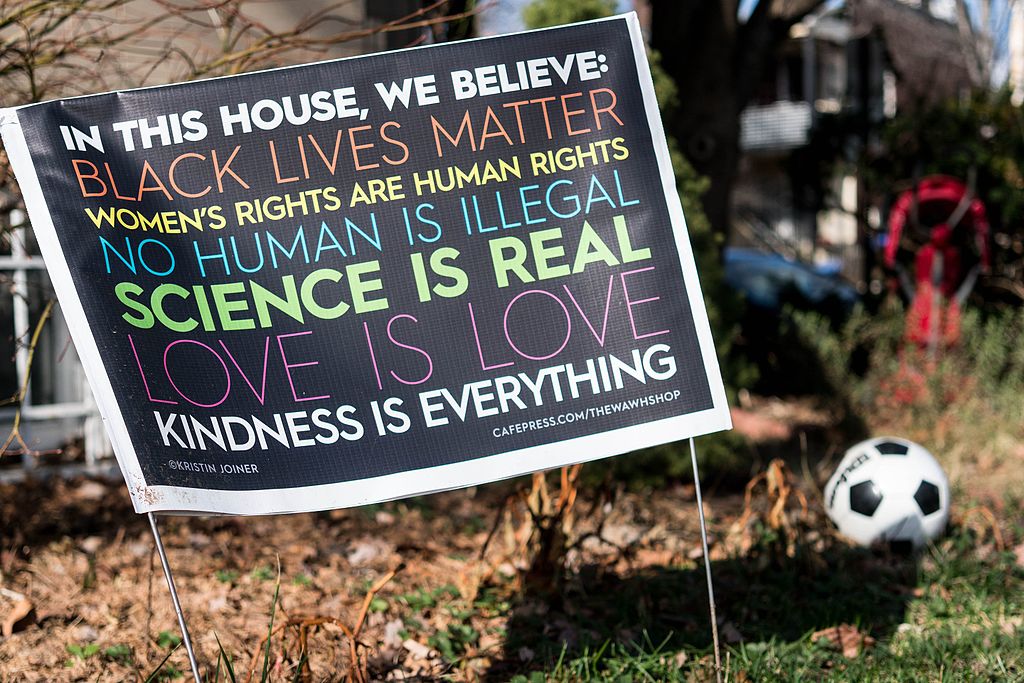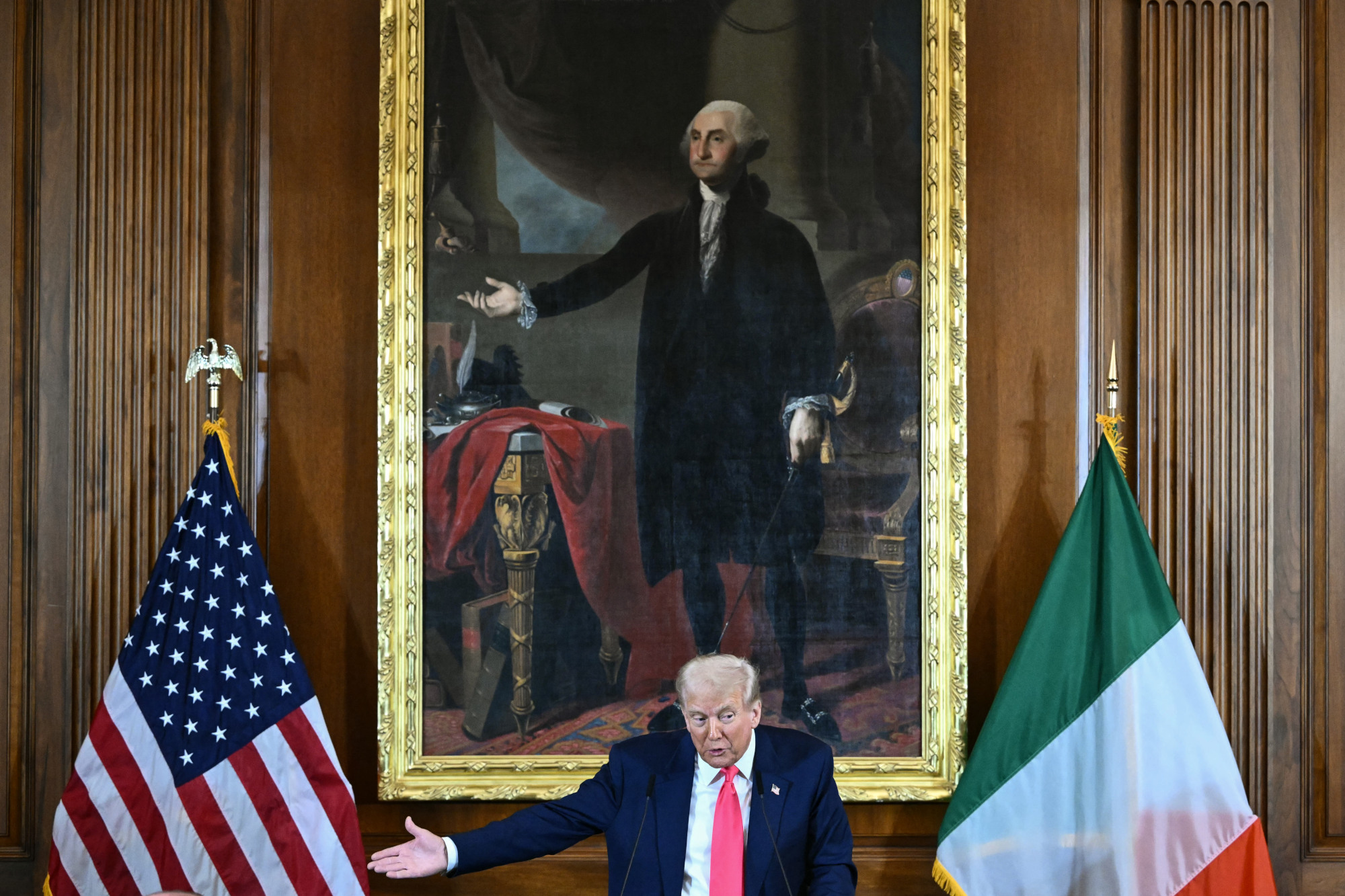I live in a blue city in a blue state, meaning I can’t so much as walk to the CVS without seeing a certain sign in half a dozen front yards. You know the one: “IN THIS HOUSE, WE BELIEVE: BLACK LIVES MATTER, SCIENCE IS REAL, WAR IS PEACE, MY LIFE FOR AIUR” and whatever the hell else they’re on about these days.
The sign has become so commonplace, so utterly oblivious to its own irony, that it feels less like a show of defiance than a profession of faith. Think of it as the left’s very own Nicene Creed, the statement of belief that Catholics recite every time they go to mass. One imagines a congregation of the pink-haired standing in pews: “I believe in Science, and in xis only son Dr. Fauci, creator of BIPOCs and TERFs…”
Then again Fauci has said he is the science, so we may have some issues of Christology to work through here.
How did this happen? How did a leftism that once encouraged freethinking end up chiseling its own Ten Commandments? In spite of its writerly triteness, the “IN THIS HOUSE” sign was first conceived of by a librarian. The day after Donald Trump was elected, Kristin Garvey of Madison, Wisconsin, was feeling dispirited. So she decided to, as Slate reported, gather “a number of quotes she found from activists, liberal politicians, and different social justice movements and inscribed them in Sharpie on a white poster board.” A photo was then posted online where it caught the attention of a budding MS Word artiste, and the rest is (1619-approved) history.
There is an apparent power to the sign that’s lost on right-wing unbelievers like me. A writer at Mashable describes her reaction to seeing it as “a fist-pumping ‘fuck yeah’” and “oh, I gotta take a picture of that.” Amanda Hess at the New York Times sighs that she was “seduced by its chaotic jumble of typefaces, its lifestyle-blog-adjacent aesthetic, its sanctimonious final line and its curious staying power.” Having never been ravished by an Arial typeface before, I can’t possibly comment. But there’s a word for those who find transcendence in rote recitation: not liberals or scientists but believers.
The idea that progressivism has become a religion is by now so familiar as to be unremarkable. The so-called New Atheists who had hoped the decline of Christianity would usher in an age of perfect rationality have been disappointed. Instead one faith appears to have replaced another. The apocryphal old Chesterton quote hangs in the air: “When a man stops believing in God, he doesn’t believe in nothing, he believes in anything.” Emphasis on anything: racist highways, de-gendered Spanish words, you name it.
Delve deep enough into all this and you arrive at a very dark philosophical corner. Carl Schmitt was a German theorist who savagely critiqued classical liberalism and its attendant ideas like individual freedom. He also happened to be a Nazi who heaped praise on the Night of the Long Knives, a fact waved away by his legions of reactionary admirers on Twitter. Yet if Schmitt today is mostly the province of very-online creeps, he did espouse at least one interesting and challenging idea: that all politics is rooted in theology.
By this, Schmitt didn’t necessarily mean there ought to be a Christian state. He meant rather that politics is in essence religion repackaged, that the concepts of the latter lurk beneath the former. And inevitably at a time of crisis, the absolute sovereignty attributed to gods will be assumed by a more earthly manifestation, a ruler. Classical liberalism, then, is futile because it attempts to constrain this all-powerful dictatorship.
The obvious objection here is that this doesn’t have to happen, that theology and politics can be split into churches and a limited government respectively, as has happened in countless countries. Yet we also shouldn’t dismiss the idea that the political can become theological, that politics can be exalted to the level of dogmas and absolutes. A society must derive morality from somewhere, and if the old ideas of Christ and cross fall away, those of identity politics and public-health commandments might very well take their place.
This is what’s happened on the left (and on the Trumpist right to an extent, though that’s another story for another time). Hence the yard signs. In addition to their confessional tone, it’s their gray-faced literalmindedness that gives them away. Even the most devout Christian doesn’t hammer his entire litany into his front lawn; that takes a special kind of zealot.
So what does THIS HOUSE believe? First, that “BLACK LIVES MATTER,” and major points for creativity there. “WOMEN’S RIGHTS ARE HUMAN RIGHTS,” though we’re still awaiting comment on unborn rights. “NO HUMAN IS ILLEGAL” — that’ll stick it to all those human-banning politicians in Washington. “SCIENCE IS REAL.” One imagines flabbergasted neighbors spewing half-chewed barbecue across the lawn: “I thought everyone in this development believed science was fake!!” “LOVE IS LOVE.” A = A. “KINDNESS IS EVERYTHING.” Now when will the police mow down those Canadian truckers?
So while progressivism might be religion, it’s stupid, hypocritical bad religion. We Catholics sometimes get tongue-tied mumbling words like “consubstantial,” but I’ll take that over a wan sloganeered imitation any day of the week.

























